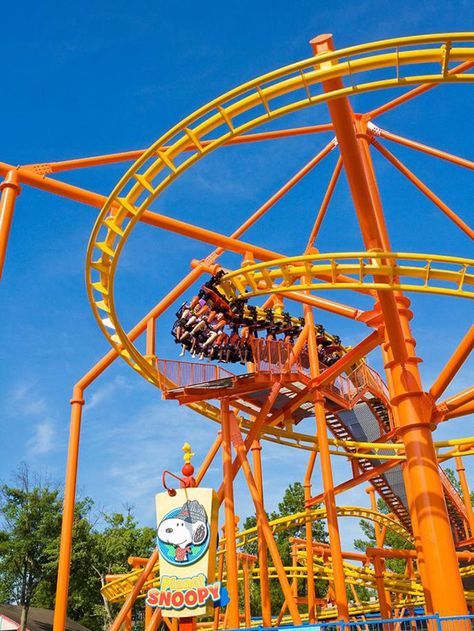When it comes to thrilling experiences at amusement parks, few attractions generate as much excitement and anticipation as roller coasters. These high-adrenaline rides are often the centerpiece of any park, attracting crowds of all ages and keeping them coming back for more. However, selecting the ideal roller coaster for your venue involves much more than simply picking the biggest or fastest option. It requires careful consideration of factors like space, budget, target demographics, and ride design. In this guide, we’ll explore how to choose the best roller coaster ride (купить американские горки) for your amusement park while keeping profitability, appeal, and visitor satisfaction in mind.
Understanding the Impact of a Signature Roller Coaster
The roller coaster is more than just a ride—it’s often the main draw of a theme park. When guests imagine a park visit, the image of a looping, towering steel track or a wooden racing coaster usually comes to mind. This ride has the power to define a park’s brand and identity, playing a major role in attracting first-time and returning visitors.
Unlike smaller attractions such as bumper cars (бамперные машинки) or carousel rides, a roller coaster can become a visual landmark and viral marketing tool. Social media users frequently post photos and videos of their coaster experiences, giving your park free advertising. If chosen wisely, your roller coaster could become your park’s signature attraction.
Evaluating Your Available Space and Park Layout
Before diving into roller coaster models and features, one of the first steps is understanding your physical limitations. Roller coasters require significant space, especially those with tall structures, long tracks, or large footprint layouts. While some parks have expansive land available, others must work creatively within compact areas.
Compact coasters, such as spinning or wild mouse models, are perfect for parks with limited space but still provide exciting twists and turns. On the other hand, larger parks might benefit from multi-launch or suspended roller coasters that offer dramatic visuals and high-capacity throughput. Your coaster should integrate seamlessly into the overall layout without causing traffic jams or blocking other popular attractions like pendulum rides (аттракцион маятник) or food courts.
Targeting Your Audience: Who Will Ride It?
Your target demographic will heavily influence the type of roller coaster that’s right for your park. Are you catering primarily to families with small children, thrill-seeking teenagers, or a general audience?
While classic rides like bumper cars appeal to a wide range of guests, your roller coaster should serve as a step up—something visitors work up the courage to ride and brag about afterward.
Exploring Customization and Theming Options
Today’s roller coasters offer extensive customization possibilities. You can work with a manufacturer to tailor nearly every aspect of the ride, from track layout and speed to car design and color. More importantly, themed roller coasters help tell a story and build an immersive experience, which keeps guests engaged longer.
Imagine a coaster themed around a space mission, jungle adventure, or urban chase—adding props, audio effects, and creative queues can turn the ride into a full-scale experience. Pairing the coaster with a themed area that includes shops, games, and other attractions like pendulum rides increases dwell time and guest spending.
Budgeting Wisely Without Sacrificing Quality
A common misconception is that only expensive coasters are impressive. While it’s true that larger, more complex rides command higher investment, there are many mid-range options that deliver thrills without breaking the bank.
It’s essential to partner with a reputable manufacturer who understands your goals and budget. Transparent communication about pricing, maintenance costs, and potential upgrades ensures a smoother planning and installation process. Many manufacturers also offer packages that include installation, staff training, and after-sale support—valuable for keeping your investment operating efficiently.
Planning for Maintenance and Operational Support
Choosing the best roller coaster also means preparing for long-term maintenance. A high-quality ride should be reliable, safe, and easy to maintain with minimal downtime. Frequent breakdowns not only frustrate guests but also hurt your bottom line.
Look for rides with a proven safety record, easy-to-source parts, and strong manufacturer support. This includes regular inspections, technical assistance, and operational guidance. It’s also wise to train staff to handle basic troubleshooting, ensuring you can minimize ride closures during peak periods.
Balancing Your Park’s Ride Portfolio
While a roller coaster may be the crown jewel of your amusement park, it should complement—not overshadow—your other attractions. A well-rounded ride portfolio includes thrills, family rides, and relaxing experiences. Guests appreciate a mix of sensations, and when planned right, each attraction feeds into the next.
For example, after experiencing the rush of a roller coaster, guests might gravitate toward more social, slower-paced rides like bumper cars. Meanwhile, thrill lovers may continue on to pendulum rides that offer different kinds of intensity. Positioning your roller coaster as part of an overall guest journey will improve satisfaction and increase time spent in the park.
Conclusion: Make the Right Choice with a Trusted Partner
Ultimately, finding the right roller coaster for your amusement park is about aligning your vision with the needs of your guests and the limitations of your space and budget. A well-chosen coaster not only boosts revenue but also helps establish your park as a premier destination for entertainment and fun.
By considering key factors such as demographics, layout, theming, and support, you can confidently select a ride that becomes a standout feature. Partner with experienced manufacturers and consultants to bring your ideas to life—and soon enough, your roller coaster might just become the next internet-famous ride that puts your park on the map.

